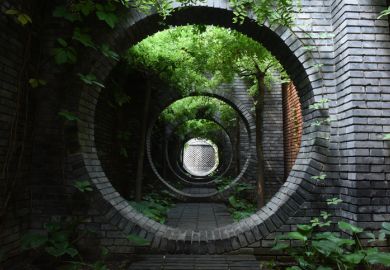Noninvasive techniques of investigating archaeological sites have been developed over the last 40 years, and a forum for the dissemination of research and results in geophysical survey within archaeology has been long awaited. To be fair to the archaeological fraternity, this situation is probably less due to their lack of interest than it is to the early tendency of pioneering geophysical surveyors to view their work as a high specialism to be undertaken only by a select and invited group of practitioners. However, while the ring-fencing of scientific ideas and applications may enhance the survival of an embryonic discipline, there is a danger that it will militate against growth within the wider investigation.
The stated aims of Archaeological Prospection suggest that the editors recognise both the disjunction, and the subsequent gap in the market; application and collaboration figure large in the intentions, and reports on integrated fieldwork are encouraged. In his editorial overview, A. M. Pollard says the journal "fulfils a need which is intermediate between the technical presentations available in the more physics-based literature and the survey data appended to archaeological site reports". This indicates an intention to publish works on a number of levels, from pure research into novel methodologies to discussions on the varying degrees of success in the field of widely available techniques, and it is clear that the envisaged readership extends well beyond the small group of active archaeological geophysicists and geophysical surveyors.
After only a few issues it is probably a little early to assess whether the mix of contributions is likely to attract this wider interest. The editors themselves may feel they have some way to go to achieve it; in a short editorial in the fourth issue reactions are invited to the proposal to publish "stop press" reports on surveys "to broaden the scope of the journal so that nonspecialists are aware of the current developments in archaeological prospection". From the point of view of those who are involved in undertaking "traditional" geophysical surveys, the journal already promises to offer a useful range of references and discussion material.
The publication of case studies that investigate reasons for poor survey results (for example, Linford's paper on magnetic profiling of archaeological sediments, Vol. 1, No. 1) is invaluable. And a paper which starts with the sentence "Brick is quite magnetic", and then goes on to demonstrate how and why a brick foundation does not produce a uniform linear anomaly, is a gift to teachers of archaeogeophysical concepts.
The presentation of five case studies of historic gardens is another gem for tutors in its clear outline of physical principles, critical assessment of results and well-defined limits of interpretation. Contributions on less widely available techniques are similarly well presented both in technical explanation and illustration.
The value of Archaeological Prospection as an educational resource is already producing the goods. This is not surprising given that the journal emanates from the University of Bradford, which has a tradition of research, development and education in archaeological science in both the field and the laboratory.
What is of some concern is perhaps embodied in the second stated aim: "To promote collaborative research between archaeologists and practitioners of prospection techniques", the assumption being that these are discrete professional disciplines. This tends to reinforce an outdated distinction which is in fact threefold, between the dirt archaeologist, the scientist and the theoretician.
Journals dedicated to practical specialisms are always in a dilemma in that their actual and potential contributors will form their core readership. A new journal, in an exciting field which has undoubtedly revolutionised archaeological fieldwork, has the opportunity to demonstrate more seamless integration of physical science with visual observation and the development of archaeological theory.
Kate M. Clark is experimental officer for geophysical survey and archaeozoology, University of Southampton.
Archaeological Prospection
Editor - A. M. Pollard and A. Aspinall
ISBN - 1075 2196
Publisher - Oxford University Press
Price - £195.00 (institutions) £95.00 (individuals)
Pages - Four a year
Register to continue
Why register?
- Registration is free and only takes a moment
- Once registered, you can read 3 articles a month
- Sign up for our newsletter
Subscribe
Or subscribe for unlimited access to:
- Unlimited access to news, views, insights & reviews
- Digital editions
- Digital access to THE’s university and college rankings analysis
Already registered or a current subscriber?



